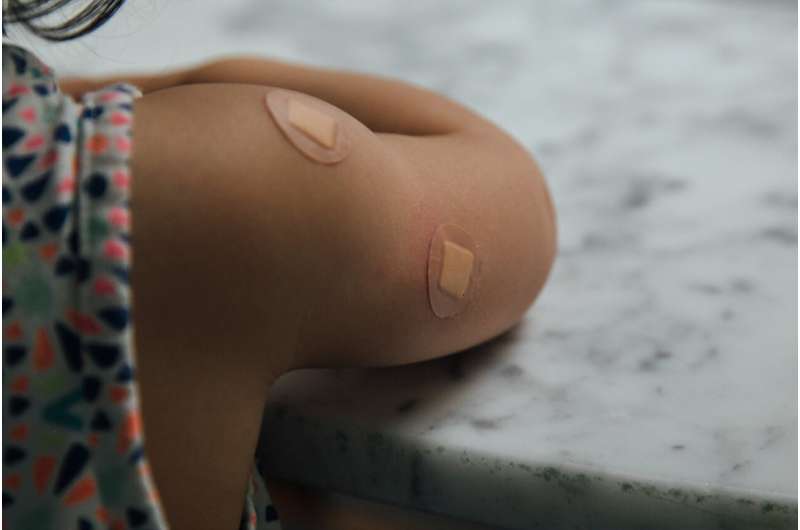Addressing neighborhood ‘hotspots’ where fewer than 60% of children receive first MMR vaccine on time

The Queen Mary study, published today in BMJ Open, found that only 75% of children are receiving the first dose of the MMR vaccine on time, compared to the 95% needed to prevent outbreaks of measles, a highly infectious disease. The poorest neighborhoods were most affected, raising concerns about growing health inequalities after the pandemic.
The researchers are calling for greater investment in vaccination services in London to ensure that all London children are fully and equally protected from this serious infection. This requires support for primary care teams to ensure they can reach all children promptly and more flexible and local access to services and information for parents and caregivers.
The MMR vaccine is part of England’s routine childhood immunization schedule. Two pre-school doses provide lifelong protection against measles, mumps and rubella. Measles is of particular concern because it can cause serious complications for some children, including pneumonia or brain swelling, and it is very infectious—one person with measles typically infects 12–18 other people in an unprotected population.
The World Health Organization recommends that 95% of children receive both doses of their MMR vaccine to avoid a measles outbreak. London has the lowest rates of MMR immunization in the U.K., a problem which predated the pandemic and has become worse subsequently.
The Queen Mary researchers analyzed de-identified data from the GP records of half a million children in north east London. They compared MMR vaccination in two groups of children: those whose first dose was due in the 19 months before the start of the first COVID-19 lockdown in March 2020, and those whose first dose was due in the 19 months after this date.
They found that the proportion of children being given the first MMR dose between 12 and 18 months of age dropped by an average of 4% during the pandemic. The poorest neighborhoods saw the biggest drop in timely vaccinations—almost 5% in the most deprived areas, compared to 1% in the least deprived areas.
London was already seeing a decline in timely uptake of the MMR vaccine before the pandemic. No region in London currently meets the 95% target recommended by the WHO. In north east London there are now more neighborhoods than before the pandemic where fewer than 60% of children receive the first MMR vaccine on time. These “hotspots”‘—which are at highest risk of a measles outbreak—are clustered in the region’s most deprived neighborhoods.
Carol Dezateux, Professor of Clinical Epidemiology and Health Data Science at Queen Mary University of London, said, “There is an urgent need to ensure all families have equitable, timely access to routine immunisations, regardless of their circumstances. The risk of an unprotected child catching measles is much higher if they are surrounded by other unprotected children, so we are particularly concerned about these increasing ‘hotspots’ where timely vaccination is below 60%.
“Queen Mary’s Clinical Effectiveness Group works closely with the NHS and local authorities in north east London, so we understand the immense pressure on primary care teams at the moment. We have developed free software tools to support practices to manage and deliver the complex childhood immunization program as part of a region-wide quality improvement program.
“Our data shows where more targeted services are needed and can support local initiatives to remove barriers to access and ensure all children in the region have an equal chance of protection. We are working with the NHS in north east London to tackle this problem together.”
More information:
Nicola Firman et al, Impact of the COVID-19 pandemic on timeliness and equity of measles, mumps and rubella vaccinations in North East London: a longitudinal study using electronic health records, BMJ Open (2022). DOI: 10.1136/bmjopen-2022-066288
Journal information:
BMJ Open
Source: Read Full Article



